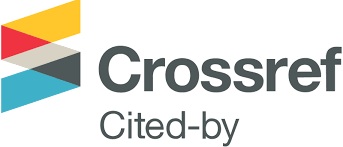Emerging Minds Journal awards for 2023 -2024 academic year
Congratulations to our winners:
Marinos Ioannou - The Most Read Article Award
Megan Rose Lawie - The Best Article Award
We accept articles in all academic topics:
Manuscript types
Authors need to register with the journal prior to submitting or, if already registered, can simply log in and begin the five-step process.
The journal welcomes contributions from existing and past undergraduate and graduate students.
Manuscript preparation: All manuscripts should be prepared in English language, in accordance with our formatting guidelines.
Please prepare your manuscript and submit a single DOC, DOCX or LaTeX file containing all the text, tables and images in it, and submit here.
For LaTeX submission, please download the Article LaTex template.
For DOC, DOCX submision, please follow the guidance below:
Title, authorship and affiliation
Please make sure your article submission has a relevant title. Do not use unnecessary long titles. List the first author and all the contributing authors, if applicable. Usually the academic project supervisor is listed as co-author. Please seek permission before co-authoring anyone. List the affiliation of each author: Organization, Department, Town, Postcode, Country. List the corresponding email of the first author.
Abstract
The abstract is a mandatory element that should summarize the contents and key findings of the paper. The abstract size is flexible but it should contain around 500 words.
Keywords
Please list your keywords, separated by semicolons. The first letter of each keyword should be capitalized.
Preparation of your manuscript
Please prepare your manuscript and submit a single DOC, DOCX or TEX file containing all the text, tables and images in it, and submit here. For LaTeX submission, please download the Article LaTex template. We strongly recommend using Overleaf free LaTeX editor to prepare your manuscript.
Section headings are optional and must be Bold.
If figures, tables, animations or text quotations from copyrighted works (including websites) are included in your paper, permission must be obtained from the copyright holder (usually the original publisher) and the author(s).
Equations should be numbered for reference. The numbers should be consecutive within the contribution, with numbers enclosed in parentheses and set on the right margin. Please do not include section counters in the numbering.
Please use the equation editor to edit your equations. We request each equation to be inserted into one row.
Figures and tables
It is essential that all illustrations are clear and legible. All figures and tables should be embedded in the text. Vector graphics should be used for diagrams and images whenever possible (JPG, TIFF, PNG, EPS, etc). Please check that the lines in line drawings are not interrupted and have a constant width. Grids and details within the figures must be clearly legible and may not be written one on top of the other. Figures are to be numbered and must have a caption which should always be positioned under the figures, in contrast to the caption belonging to a table, which should always appear above the table. Figures and Tables should be cross-referred in the text.
Citations
Arabic numbers are used for citation, which is sequential by order of citation. The reference numbers are given in brackets and are not superscript. Please observe the following guidelines:
Single citation: [9]
Multiple citations: [4-6,9].
The numbers should be listed in numerical order.
Sequential citation by order of citation: reference [7 ] cannot be cited before reference [5], for example.
If an author’s name is used in the text: “Miller [9] was the first …” please write all references using the Latin alphabet. If the title of the book you are referring to is, e.g. in Russian or Chinese, then please write (in Russian) or (in Chinese) at the end of the transcript or translation of the title. Do not include references to pieces of work that are not connected with your paper. Harvard referencing style is not accepted.
Acknowledgments
Acknowledgments are a place to recognize any contributions made to the paper that do not meet the criteria for authorship. This may include technical support, gifts received, or organizational assistance. Anyone who meets the criteria for authors must be included as an author and not merely acknowledged. Personal acknowledgments (e.g. family members) are acceptable, and it is recommended to add their full name. Titles (Dr., Mr., Prof., etc.) should not be used.

ISSN 2976 - 9094


Congratulations to our winners:
Marinos Ioannou - The Most Read Article Award
Megan Rose Lawie - The Best Article Award
 |
 |
 |
 |
 |
 |
The journal is licensed under a Attribution International (CC BY).
Copyright © IPI Publishing - Information Physics Institute
This site uses cookies. By continuing to use this site you agree to our use of cookies.
